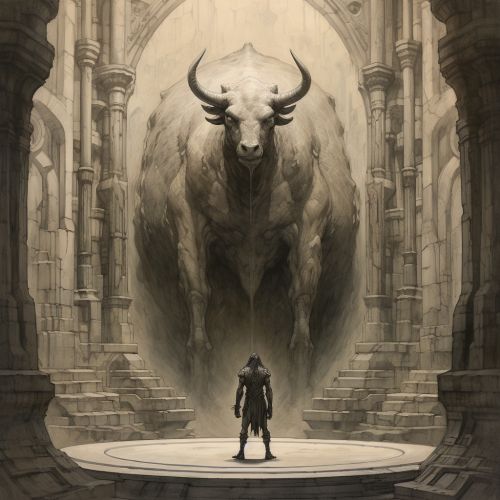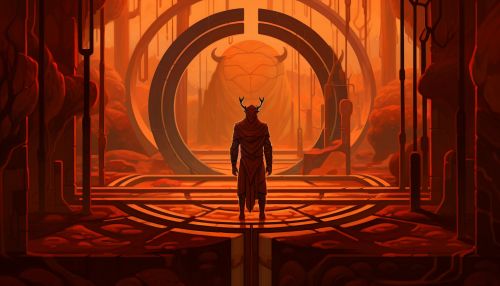Minotaur
Origins and Mythology
The Minotaur, known in Greek mythology as a creature with the head of a bull and the body of a man, is a figure that has been both feared and revered throughout history. The term "Minotaur" derives from the Ancient Greek words "Minos" and "Taurus", which translate to "Minos's Bull". The Minotaur was the offspring of the Cretan Bull and Pasiphaë, the wife of King Minos of Crete.


The story of the Minotaur's birth is a complex tale of desire and deception. Pasiphaë, under a spell cast by Poseidon, fell in love with the Cretan Bull. To fulfill her desire, she enlisted the help of the craftsman Daedalus, who built a hollow wooden cow for her to hide in. The result of this union was the Minotaur.
The Minotaur was kept in a labyrinth designed by Daedalus at the command of King Minos. The labyrinth was an elaborate maze-like construction designed such that escape was impossible. The Minotaur was offered a regular sacrifice of youths and maidens to satisfy its monstrous appetite.
Cultural Significance
The Minotaur is more than just a creature of myth. It has been a symbol of power and fear, used in art and literature as a metaphor for various human conditions. The labyrinth, too, has become a powerful symbol, representing the complexities and challenges of life.
In literature, the Minotaur often represents the primal, animalistic aspects of human nature. It is a symbol of the beast within, the part of us that is driven by instinct and desire rather than reason. The labyrinth, in turn, represents the challenges and obstacles we face in life, and our journey to overcome them.
In art, the Minotaur has been depicted in various ways. From ancient Greek pottery to modern paintings and sculptures, the Minotaur continues to be a source of fascination and inspiration for artists. It is often depicted as a powerful, menacing creature, a testament to its enduring impact as a symbol of fear and power.
Modern Interpretations
In modern times, the Minotaur has found its way into popular culture, appearing in books, films, and video games. It is often portrayed as a formidable adversary, a creature of great strength and ferocity. In some interpretations, the Minotaur is depicted as a tragic figure, a victim of circumstances beyond its control.
The labyrinth, too, has found its way into modern culture. It is often used as a metaphor for the complexities and challenges of life, a symbol of the journey we all must undertake to find our true selves.
